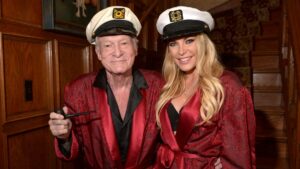“Unlocking the Secrets of the Moon: The Ingenious Strategies That Made NASA’s Historic Landing Possible”
“…most desirable from the standpoints of time, cost, and mission accomplishments.”
Suddenly, the once-maligned John Houbolt became a NASA hero; upon learning of the selection, Houbolt’s supervisor shook his hand and declared:
“I can safely say I’m shaking hands with the man who single-handedly saved the government $20 billion.”
In 1963, Houbolt was awarded the NASA Exceptional Scientific Achievement Medal, the citation for which read:
“[For his] foresight, perseverance, and incisive theoretical analysis of the concept of lunar orbit rendezvous, revealing the important engineering and economic advantages that led to its adoption as a central element in the U.S. manned lunar exploration.”
It is worth noting here that in addition to Direct Ascent, Earth Orbit Rendezvous, and Lunar Rendezvous, a fourth lunar landing profile was also proposed, known as Lunar Surface Rendezvous or LSR. This involved landing an unmanned spacecraft loaded with fuel ahead of the astronauts, who would then land nearby and transfer the fuel into their own tanks, allowing them to lift off from the lunar surface.While this approach reduced the payload that had to be carried by any one launch vehicle, it was deemed far too risky and never seriously considered.
But our story is far from over, for while straightforward on paper, actually implementing Lunar Orbit Rendezvous was a whole other matter. On July 25, 1962, NASA sent out invitations to eleven aerospace contractors to bid on the contract for the Lunar Excursion Vehicle or LEM – of which nine submitted detailed proposals. On November 7, the Grumman Aerospace Corporation of Bethpage, New York – which had conducted extensive preliminary studies on lunar landing vehicles – was selected as prime contractor, with development costs estimated at $350 million. The company had its work cut out for it; at the time, the United States had only a few hours of cumulative spaceflight under its belt, and the Grumman engineers were being tasked with building a spacecraft that could land two astronauts on the surface of another world and return them safely to orbit. There were countless unknowns. How easy would it be for two spacecraft to rendezvous and dock in lunar orbit? How would the astronauts guide the LEM down to the lunar surface and make a soft landing – and what would await them when they touched down? No spacecraft – unmanned or otherwise – had yet landed on the moon or even taken high-resolution pictures of its surface; in the early days of the Apollo Programme, it was feared that the lunar surface might be covered by several metres of fine dust or regolith, which would swallow up a landing spacecraft or make it tilt severely to one side, preventing it from safely lifting off again. And could all these tasks be accomplished using a vehicle light enough to be launched to the moon by a single Saturn C5 rocket – by now renamed the Saturn V? With the 1970 deadline uncomfortably close, much of the hardware would have to be designed before any of these questions could be definitely answered; educated guesses were the order of the day.











